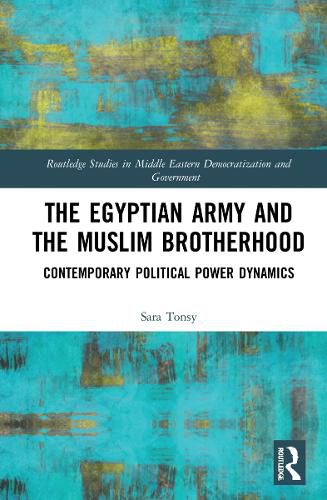Readings Newsletter
Become a Readings Member to make your shopping experience even easier.
Sign in or sign up for free!
You’re not far away from qualifying for FREE standard shipping within Australia
You’ve qualified for FREE standard shipping within Australia
The cart is loading…






This book provides an analysis of the relationship between the Egyptian army and the Muslim Brotherhood (MB). This is at times of cooperation, collaboration, rivalry, and enmity, offering a vivid perspective as to how the similarities of both political actors bring them together after decades of invisible presence in the Egyptian political field.
Using ethnographic material that includes interviews, observations, and other forms of expression, both political actors' common trajectories are analyzed in terms of power dynamics. The study allows an insight on the understanding of the differences between madani (civil), 'askari (military), and dini (religious), how they are used and projected on the Egyptian political field. Finally, the book provides a dialogue simulation of the discourse of the MB and army, starting 2011, while analyzing the meaning of this exchange in terms of symbols, power, and mobilization.
In highlighting similar elements to their respective governmentalities, this book outlines a new analysis of the rivalry, making it an important contribution for scholars and students interested in collective violence, civil-military relations, and political Islam in the Middle East.
$9.00 standard shipping within Australia
FREE standard shipping within Australia for orders over $100.00
Express & International shipping calculated at checkout
This book provides an analysis of the relationship between the Egyptian army and the Muslim Brotherhood (MB). This is at times of cooperation, collaboration, rivalry, and enmity, offering a vivid perspective as to how the similarities of both political actors bring them together after decades of invisible presence in the Egyptian political field.
Using ethnographic material that includes interviews, observations, and other forms of expression, both political actors' common trajectories are analyzed in terms of power dynamics. The study allows an insight on the understanding of the differences between madani (civil), 'askari (military), and dini (religious), how they are used and projected on the Egyptian political field. Finally, the book provides a dialogue simulation of the discourse of the MB and army, starting 2011, while analyzing the meaning of this exchange in terms of symbols, power, and mobilization.
In highlighting similar elements to their respective governmentalities, this book outlines a new analysis of the rivalry, making it an important contribution for scholars and students interested in collective violence, civil-military relations, and political Islam in the Middle East.